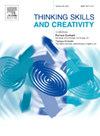When more or less? The role of two types of flow experiences in creative teaching
IF 3.7
2区 教育学
Q1 Social Sciences
引用次数: 0
Abstract
The use of creative teaching is becoming increasingly common in higher education institutions. However, there is limited research on the impact of creative teaching on the classroom from a flow experience perspective. Using the stimulus–organism–response model and flow theory, this study presents an analysis of the overall process of creative teaching's impact on student classroom engagement, proceeding from two types of flow experiences: immediate and continuous experiences. This empirical study was conducted in the institutions piloting creative teaching in China. The results affirm the following: first, the balance of challenges and skills, goal clarity and feedback in creative teaching all affect students’ immediate and continuous experiences significantly and positively. Second, immediate experiences have significantly positive effects on both behavioural and social engagement. Third, for science and engineering students, continuous experiences have significant effects on behavioural engagement and social engagement; however, these effects do not obtain for humanities and social science students. Fourth, there is no significant difference in the effects of creative teaching on engagement between male and female students. The potential contribution of this study is that we create a theoretical model of how creative teaching affects student engagement. Based on this model, educational administrators and teachers can understand the whole process of the impact of creative teaching on students’ behaviour.
当多当少?两种流动体验在创造性教学中的作用
在高等教育机构中,创意教学的使用越来越普遍。然而,从流动体验的角度来研究创意教学对课堂的影响却十分有限。本研究运用 "刺激-组织-反应 "模型和 "流动 "理论,从 "即时体验 "和 "持续体验 "两种流动体验出发,分析了创意教学的整体过程对学生课堂参与度的影响。实证研究在中国的创意教学试点院校进行。研究结果表明:第一,创意教学中挑战与技能的平衡、目标的清晰度和反馈都会对学生的即时体验和持续体验产生显著的正向影响。第二,即时体验对行为参与和社会参与都有显著的积极影响。第三,对理工科学生而言,持续体验对行为参与和社会参与有显著影响;但对人文社科类学生而言,这些影响并不明显。第四,创造性教学对男女学生参与度的影响没有明显差异。本研究的潜在贡献在于,我们创建了一个创意教学如何影响学生参与度的理论模型。根据这一模型,教育管理者和教师可以了解创意教学对学生行为影响的全过程。
本文章由计算机程序翻译,如有差异,请以英文原文为准。
求助全文
约1分钟内获得全文
求助全文
来源期刊

Thinking Skills and Creativity
EDUCATION & EDUCATIONAL RESEARCH-
CiteScore
6.40
自引率
16.20%
发文量
172
审稿时长
76 days
期刊介绍:
Thinking Skills and Creativity is a new journal providing a peer-reviewed forum for communication and debate for the community of researchers interested in teaching for thinking and creativity. Papers may represent a variety of theoretical perspectives and methodological approaches and may relate to any age level in a diversity of settings: formal and informal, education and work-based.
 求助内容:
求助内容: 应助结果提醒方式:
应助结果提醒方式:


